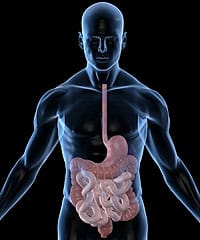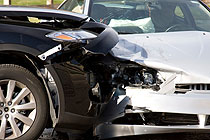Advanced Laparoscopic Surgery
Laparoscopy is a minimally invasive surgical procedure used to diagnose and treat problems of the abdominal and pelvic areas. During this procedure, an endoscope (tube) with a camera on the end is inserted through a tiny incision to allow your doctor to closely examine the organs of the area. Surgical instruments can be inserted through additional incisions to treat any identified problems.
This procedure may be performed for a number of reasons, including to:

- Perform a biopsy
- Examine and possibly remove any growths (such as tumors)
- Check for metastasis (spreading) of cancer from other areas
- Repair a hernia
- Remove organs such as the spleen, gallbladder or appendix
Laparoscopy is performed under general anesthesia and takes 30 to 90 minutes, depending on what is done during the procedure. Patients can usually go home shortly after the procedure and return to work and other normal activities the next day. Strenuous activity should be avoiding for about a week. Laparoscopy is considered a safe procedure with little risk of complications.
We specialize in advanced laparoscopic procedures for the following:
- Gastroesophageal Reflux Disease (GERD)
- The Spleen
- The Adrenal Gland
- The Colon
Oncology Surgery
Sometimes the most effective way to treat a malignant tumor is to surgically excise (remove) the diseased tissue. A general surgeon may be chosen for this task when the cancer is present in the breast, gastrointestinal (GI) tract, liver or endocrine system, and potentially for melanoma and sarcoma as well. Once the tumor has been removed, additional therapies may be recommended to lower the chance of recurrence. These treatments may include radiotherapy, chemotherapy, or ultrasound or laser surgery. Early detection and the latest techniques and technologies are used to achieve the best possible outcome.
Anti-reflux Surgery (Gerd)

Fundoplication, commonly known as reflux surgery, is a surgical procedure used to correct problems of the lower esophageal sphincter (LES) associated with gastroesophageal reflux disease (GERD). It may also be used on patients with esophagitis or to repair a hiatal hernia. This procedure prevents acid from traveling back into the esophagus by strengthening the valve between the esophagus and stomach.
During fundoplication, the fundus (the upper part of the stomach) is wrapped around a band of muscles at the base of the esophagus and sewn into place. This helps strengthen the LES muscles and increases pressure on them, preventing reflux from occurring. The LES muscles are supposed to open when food is present in the esophagus, in order to let it into the stomach, but is supposed to close once the food has entered, serving as a one-way valve. In many people, the valve is not strong enough to stay closed and acid may flow back into the esophagus, causing irritation and inflammation of the lining.
Trauma And Critical Care Management
The structures of our musculoskeletal system – the bones, joints, ligaments, tendons and other tissues – are highly susceptible to damage caused by trauma from accidents, injuries and other events. These traumatic events may include a fall, automobile accident or sports injury, and often involve a direct blow or twisting on a specific area of the body, causing pain, swelling, inflammation and other sometimes serious complications.

Robotic Surgery
Robotic-assisted surgery is the least invasive and often most effective procedure available. Addressing the shortcomings of other types of surgery, robotic surgery offers many advantages to both patient and doctor. It combines the effective control of open surgery with the less invasive approach of laparoscopy.
Robotic-assisted surgery is usually performed with the da Vinci® Surgical System, a console made by Intuitive Surgical that is considered the best in these types of procedures. The system is comprised of a surgeon console, where the surgeon sits and operates the master controls as he views the operating area through real-time images; the patient-side cart, which has four robotic arms that actually perform the procedure as well as provide images for the surgeon; and the EndoWrist instruments, which are the tools that perform the intricacies of the procedure and are completely controlled by the surgeon.
This approach offers patients effective treatment of their condition as well as:
- Less pain
- Less bleeding
- Less scarring
- Shorter recovery time
- Lower risk of infection

